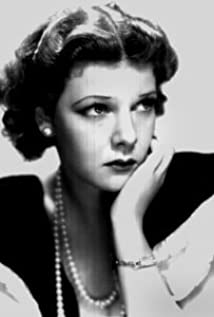Elissa Landi was born in Venice, Italy, on December 6, 1904. From an early age, Elissa wanted to be an actress and a writer. Her acting career started at the Oxford Repertory Company and on London's West End performing with actors such as Laurence Olivier and John Gielgud. She played Desdemona in Othello and appeared in plays with and by Noel ...
Show more »
Elissa Landi was born in Venice, Italy, on December 6, 1904. From an early age, Elissa wanted to be an actress and a writer. Her acting career started at the Oxford Repertory Company and on London's West End performing with actors such as Laurence Olivier and John Gielgud. She played Desdemona in Othello and appeared in plays with and by Noel Coward (most notably "Blithe Spirit;" in which she forced to enter through the fireplace when the door jammed). She made her London debut in "The Storm," which lasted for five months and for which she received rave reviews for her performances. That in turn led to meaty leads in "Lavendar Ladies" and other plays. European film producers took notice of the photogenic beauty and Elissa starred in eight movies over the next two years. Her first film was the German-made Synd (1928). Her career didn't impress critics, though, until she played Anthea Dane in The Price of Things (1930). Elissa felt that she would make more headway in the U.S., so she arrived in New York in 1931 to star in the stage version of "A Farewell to Arms." Although the play made no huge impression, Hollywood sat up and took notice, and she soon appeared in Body and Soul (1931) opposite Charles Farrell. However, it wasn't until Cecil B. DeMille's biblical epic Le signe de la croix (1932) that many moviegoers got their first glimpse of Elissa, and they were enthralled, even though she was among such heavyweight stars as Claudette Colbert, Fredric March, Charles Laughton and Vivian Tobin. Completed in less than eight weeks, the film was a smash hit. After A Passport to Hell (1932) and La coupe de Calcutta (1932), Elissa scored again in The Warrior's Husband (1933), a film about the intrigues and intricacies of the old Roman Empire that starred Marjorie Rambeau and Ernest Truex. In 1934 Elissa co-starred with Robert Donat in the classic Le comte de Monte Cristo (1934). The next year saw Elissa as Lisa Robbia, a world class singer (singing voice dubbed by Nina Koshetz) in Caprices de femme (1935) with Cary Grant, the era's greatest leading man. In Cary Grant's biography, he mentions seeing Elissa on a typewriter, pursuing her other passion of writing, between takes throughout the filming process. After a mediocre role in Mad Holiday (1936), Elissa had a better part as the tormented Selma Landis in the hit Nick, gentleman détective (1936), the second film in the series. She appeared in only three movies after that, the last being the low-budget Corregidor (1943) for bottom-of-the-barrel Producers Releasing Corporation. When that picture was completed, Elissa left films behind and concentrated on writing, producing six novels and books of poetry. After Hollywood she concentrated on Broadway, regional theatre, and summer stock near Kingston NY, where she lived with her husband, Curtis Thomas, and their daughter. Elissa succumbed to cancer on October 21, 1948. She was just 43 years old.
Show less «



